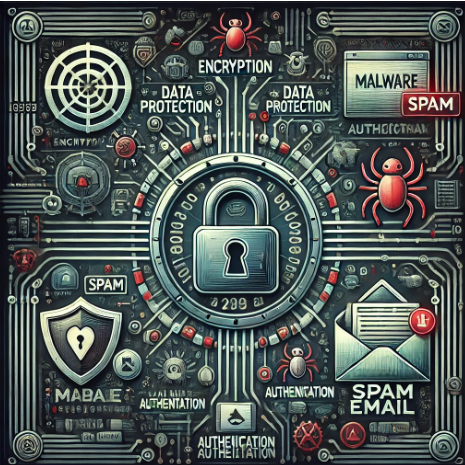1. Summary
Email has become an essential communication tool in modern society, playing a crucial role in both personal and business contexts. Given its widespread use, the ITU international email standards are critical for addressing threats like ransomware, malicious attachments, and phishing attacks. Compliance with these standards ensures consistent server communication protocols, reducing compatibility issues in email exchanges. Additionally, these standards help enhance security by addressing vulnerabilities, making it more challenging for hackers to gain unauthorized access to systems.
2. Importance of international agreements
The ITU standards, established by international consensus, ensure interoperability between email systems in global communication. Without adherence to common protocols and standards across various operating systems and networks, email delivery could fail. The international standards, ITU-T X. 1236 Security Requirements and Countermeasures for Targeted Email Attacks, guarantee consistent ICT communication, allowing users to send and receive emails seamlessly regardless of location, while reducing compatibility issues and enhancing security against potential cyber threats. This standardization facilitates reliable, secure communication across different environments.
Moreover, internationally agreed-upon security protocols enhance protection against threats during email transmission. These protocols help defend against phishing attacks that trick users into downloading malware through fraudulent emails and websites, as well as spoofing attacks that forge addresses similar to legitimate domains. By adhering to these standards, organizations can quickly and effectively counter such threats, ensuring greater security and trustworthiness in email communications.
With email encryption and authentication mechanisms, users can securely communicate while protecting against data breaches and leaks of confidential corporate information. These internationally approved security measures enhance data privacy and safeguard sensitive information, providing robust protection against unauthorized access.
3. Economic impact
- Relationship Between ISO and ITU-T Certifications
ISO 27001 and ISO 9001 are two widely applied ISO certifications. ISO 27001, an information security standard, is used across industries like finance, IT, and healthcare. For example, a financial institution used ISO 27001 to encrypt all confidential data transmitted via email and implement multi-factor authentication (MFA) for outbound emails. ISO 9001, the international standard for quality management, is used to improve product and service quality. An electronics company, for instance, operates a dedicated email system for customer complaint handling based on ISO 9001 standards.
- ITU Email International Standards Incorporated into Treaties
The WTO TBT Agreement, applicable to 163 member countries, refers to an agreement that aims to lower technical barriers to trade and promote free trade by requiring countries to align their standards and technical regulations with international standards.
Sections 2.4 and 2.7 of the TBT Agreement state that countries should "use international standards or relevant parts as a basis for their technical regulations" and "should positively consider accepting equivalent technical regulations of other members." These provisions focus on minimizing technical barriers in international trade through the harmonization of technical regulations and standards, promoting mutual recognition and cooperation. Similar principles can be found in the international agreement ISO/IEC Guide 2:1991, which includes content encouraging the adoption and application of international standards as a priority.
4. Security and Personal Information protection
- Encryption and Data Protection
Technologies for enhancing email communication security include TLS (Transport Layer Security) encryption and SPF (Sender Policy Framework). TLS encrypts the connection between email clients and servers using protocols like SMTP and IMAP, preventing data tampering during transmission and protecting the content from third-party access. SPF, on the other hand, allows email domain owners to configure DNS settings to prevent spoofing and verify IP address servers.
- Countermeasures Against Malware and Targeted Attacks
To protect users from cyber attacks and strengthen personal information security, effective response methods are crucial.
To address new malware attack threats, it is essential to implement behavior-based detection to identify viruses that are not registered as patterns. Additionally, it is recommended to report newly discovered or detected malware activities to users through a manual or automated reporting process, enabling them to handle suspicious emails effectively. For targeted email attacks such as spear phishing and social engineering, it is important to verify compliance with email communication protocols and assess the trustworthiness of reply URLs to avoid providing sensitive personal information, such as passwords.
- Authentication Mechanisms
This reflects authentication mechanisms for building trust between email users and servers. Technologies such as SPF (Sender Policy Framework), DKIM (DomainKeys Identified Mail), and DMARC (Domain-based Message Authentication) can verify that the sender of an email has not been spoofed. This helps prevent phishing attacks and reduces email spoofing.
The ITU-T X.1236 international email standard states in [7.1.2 Malware in an attachment] that "spoofing the sender's address to deceive the recipient into opening an email containing a malicious document may occur." Security requirements for this can be found in [8.1.2 Security requirements to counter malware in attachment attacks].
**Detailed information can be found at the link below.**
▶Types of Targeted Email Attacks
Types of Targeted Email Attacks – Mail Inspector Platform (mailinspectplatform.com)
▶Block Email Spoofing
https://mailinspectplatform.com/block-email-spoofing/
▶Prevent System Disruption due to Ransomware
https://mailinspectplatform.com/prevent-system-disruption-due-to-ransomware/
5. Conclusion
The international standardization agreement between ITU and ISO, which are closely related, plays a crucial role in the modern communication environment. The email standards established by ITU ensure interoperability among various systems worldwide, reducing technical barriers and enabling seamless communication without spatial constraints. In particular, compliance with international email standards to combat malware and targeted attacks is essential for ensuring the safety and integrity of email communications in a complex digital landscape.
Reference
** Related Content Recommendations
▶[Spoofing] Understanding Email Security and Spoofing
[Spoofing] Understanding Email Security and Spoofing (mailinspector2.blogspot.com)
▶Understanding Email Attacks and Malicious Code
Understanding Email Attacks and Malicious Code (mailinspector2.blogspot.com)
▶The Future of Email Standardization: The Changes Realized by International Standard
<ITU-T: Setting the standard>
<Let’s continue putting more minds to the task of standards development>
Let’s continue putting more minds to the task of standards development - ITU
<Quality Management System: What is it?>
What is a Quality Management System (QMS) in ISO 9001? (advisera.com)
<Data protection>






![[Spear Phishing] Understanding Targeted Attacks and Protection Strategies](https://blogger.googleusercontent.com/img/b/R29vZ2xl/AVvXsEiG-iPKOKHzFK7E8vXQHuA2vH50IgwobrHLWQpM8R7YsyM7A6-ClRo5I3X6YyxaE93bnF85ZtW_mvIz0R0ROUuhuWQXqhq_TYOll4yP7rjRH8ACAOOVUro0onIMgV3OE8_M7S1bTx8bc09-LoWOJsduXgv9f6EJ5Osf_EMEzTGcjif6lELDXC0SoJS7hEg/w72-h72-p-k-no-nu/001.png)


![[Media] XSS Attacks Across SNS: A Historical Analysis](https://blogger.googleusercontent.com/img/b/R29vZ2xl/AVvXsEg1PB2eQDHDkUQntp2VK8pqovijupQN4tsrV42fIq9vBw8TYis-BnTLjbZb2hLTnDMTM5PtTdnZTwHCaBsRCLPdYMEkmi3UboL_qpWnczwCT6E66xtBzYodLKKDaWPTOJRh5BYjfp5murVjPZ18Oz_6fjJK7mRrvalwrWijFM5vkRbDQza_ISTQlm3kM4Y/w72-h72-p-k-no-nu/%EC%8D%B8%EB%84%A4%EC%9D%BC.png)



0 Comments